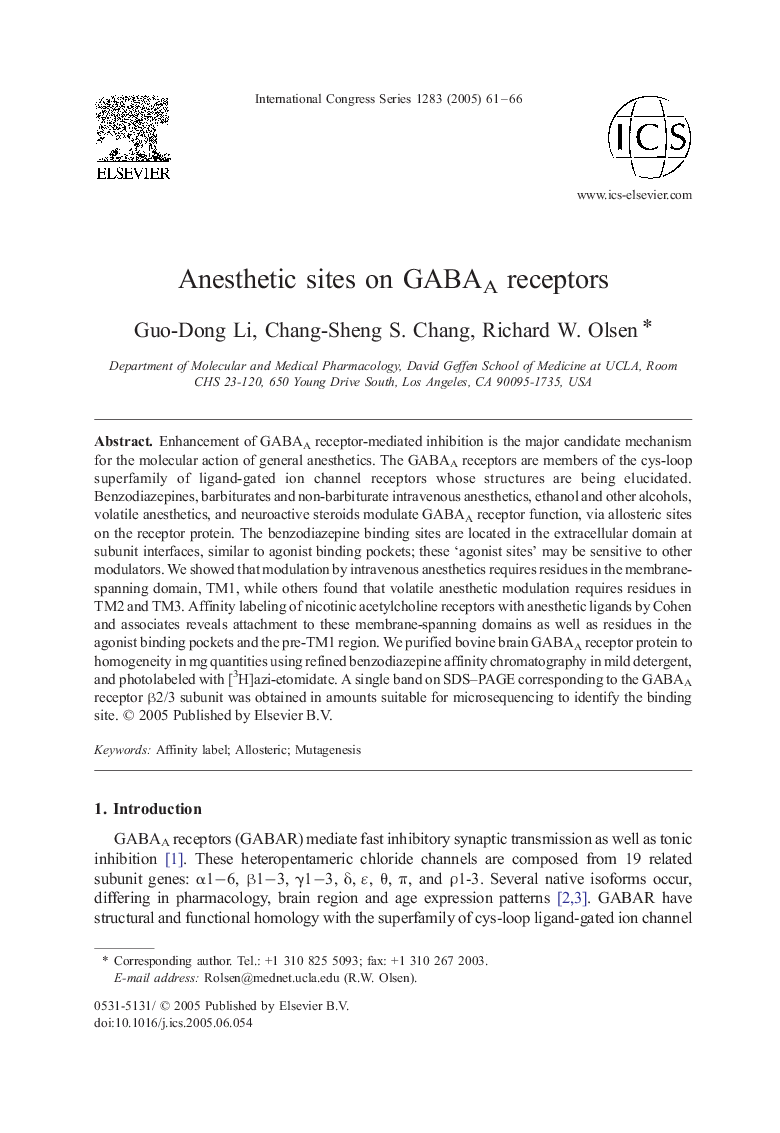| Article ID | Journal | Published Year | Pages | File Type |
|---|---|---|---|---|
| 9021449 | International Congress Series | 2005 | 6 Pages |
Abstract
Enhancement of GABAA receptor-mediated inhibition is the major candidate mechanism for the molecular action of general anesthetics. The GABAA receptors are members of the cys-loop superfamily of ligand-gated ion channel receptors whose structures are being elucidated. Benzodiazepines, barbiturates and non-barbiturate intravenous anesthetics, ethanol and other alcohols, volatile anesthetics, and neuroactive steroids modulate GABAA receptor function, via allosteric sites on the receptor protein. The benzodiazepine binding sites are located in the extracellular domain at subunit interfaces, similar to agonist binding pockets; these 'agonist sites' may be sensitive to other modulators. We showed that modulation by intravenous anesthetics requires residues in the membrane-spanning domain, TM1, while others found that volatile anesthetic modulation requires residues in TM2 and TM3. Affinity labeling of nicotinic acetylcholine receptors with anesthetic ligands by Cohen and associates reveals attachment to these membrane-spanning domains as well as residues in the agonist binding pockets and the pre-TM1 region. We purified bovine brain GABAA receptor protein to homogeneity in mg quantities using refined benzodiazepine affinity chromatography in mild detergent, and photolabeled with [3H]azi-etomidate. A single band on SDS-PAGE corresponding to the GABAA receptor β2/3 subunit was obtained in amounts suitable for microsequencing to identify the binding site.
Keywords
Related Topics
Life Sciences
Biochemistry, Genetics and Molecular Biology
Molecular Biology
Authors
Guo-Dong Li, Chang-Sheng S. Chang, Richard W. Olsen,
